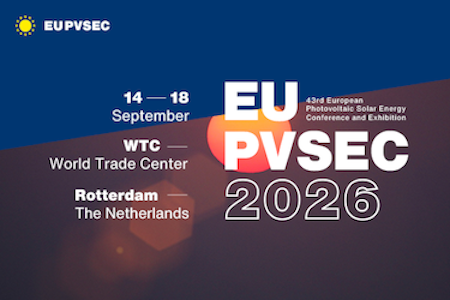Post - Blog
How mature is the Polish M&A renewable energy market?
- 5 years ago (2020-12-09)
- Junior Isles

By Patrycja Figuła and Rafał Woźniak , DWF

EU-PVSEC 2026
In Poland, a trend towards renewable energy sources (RES) has increased and, consequently, the number of investors intent on minimising their carbon footprint has also increased. The rise in prices of carbon dioxide emission allowances alongside falling costs of renewable energy installations have made green energy alternatives attractive. Higher prices of oil, coal, natural gas, limited resources of these minerals, economic growth and legal regulations has resulted in the use of RES in Poland dominated by conventional methods. The above factors have also caught the attention of the mergers and acquisitions (M&A) market, which has resulted in the best years of the Polish renewable energy sector.
Wind of legislative change
According to the DealWatch report, Poland was ranked second in the region of central, eastern and south-eastern Europe in terms of the numbers and total value of M&A transactions in the renewable energy sector in years 2007-2010. Certainly, the scale of these transactions was much lower compared to the current numbers. Until 2019, the M&A dynamics for renewables was persistent stagnation and dormant. Investors did not recognise a huge potential of the Polish market. It cannot be denied that these were transactions with different values and, in comparison with the whole Europe, Poland was not in the lead. The desired development came along with legislative changes in mid-2019. The amendment of the Polish Energy Act of 29 January 2007 dated 29 August 2019 brought the most important normative change shaping the renewable energy sector in Poland. The amendment introduced a number of beneficial changes in the law on renewable energy sources and applies to some other legal acts, especially the Energy Law Act and the Wind Power Plant Investment Act, so-called the Distance Act. The assumptions concentrated on improving the situation of producers of electricity from renewable energy sources and on preparing the legal framework for the planned record auctions of renewable energy.
As a result, Polish RES auctions in 2019 were not only the largest ones announced by the Energy Regulatory Office but perhaps, more importantly, one of the largest in the industry. Together with this activity came a stream of renewable energy M&A activities and growth, as developers, utilities and investors tried to take advantage of 'green' opportunity. M&A activity in the renewable energy sector is extremely strong now and since 2019 in the Poland jurisdiction, it has become almost feverish.
There are several deals, which sent shockwaves across the RES. For instance, purchase of wind farms by Tauron, which is part of the draft of the Polish Energy Policy until 2040. Tauron purchased five wind farms with the total capacity of 180 MW for €137 million. Other transactions include Enefit Green, which bought 20 solar power parks in Poland for €17.3 million or the recent transaction of Polish Enterprise Fund VI, a private equity fund managed by Enterprise Investors. The fund sold the Skoczykłody wind farm to PGE Energia Odnawialna. The value of the transaction (enterprise value) was €50 million. These transactions not only show how Poland has accelerated but also how vast interest in the renewables continues to grow.
Furthermore, the report prepared by Navigator Capital and Fordata in the second quarter of 2020 showed that there were 52 M&A transactions. It cited concerns as the numbers of transactions were reduced by 11 deals, in comparison to the previous year. Nevertheless, the biggest transaction in this quarter was the acquisition of Energa Group for about PLN 2.8 billion by PKN Orlen. This shows the potential of the sector and as the company announced, new investments in renewable energy sources are calculated, including offshore wind farms.
The change in the energy and the gradual abandonment of coal, has forced investments in renewable energy sources, which means that the potential of this sector will increase significantly in the coming years.
Poland is currently the only market where auctions for the sale of energy generated in solar power plants are conducted on such a large scale. At the beginning of August, the Energy Regulatory Office published the newest data on the installed capacity of renewable energy sources in Poland. According to this information, at the end of June, the installed capacity of larger renewable energy sources in Poland was already 9.5 GW, an increase compared to the end of 2019 by 370 MW. Such numbers could not go unnoticed by dealmakers.
Covid-19 impact
Unquestionably, the Covid-19 pandemic is an unprecedented occurrence. Changing legal environment and market have a huge impact to M&A activity. In recent months, there has been a marked a slowdown in M&A transactions in Poland and worldwide. Now, plenty of M&A transactions are delayed or on pause. However, this trend does not apply to the Polish RES market (especially photovoltaic market), where the acquisition of projects is at its best and does not seem to be slowing down.
Forecast of the renewables energy deals
Due to the pandemic, 2020 did not end as RES experts expected. This year's auctions for renewable energy sources took place between 3 November and 3 December. Unfortunately, part of the RES auctions remained unresolved because of a failure to submit the required number of bids. Nonetheless, the Ministry of Climate estimates that the auctions conducted in 2021 will generate nearly 2200 MW of new generation capacity. In view of the above, one thing must be said: Polish M&A market in the renewable energy sector is prepared and is looking forward to making deals in spite of a raging pandemic.
